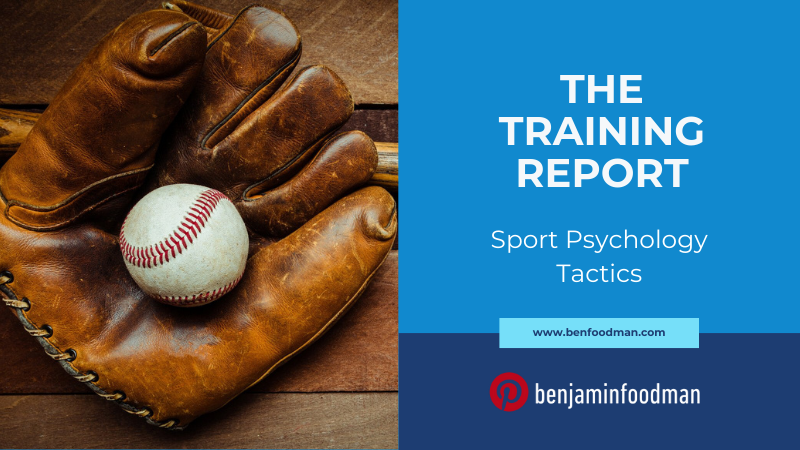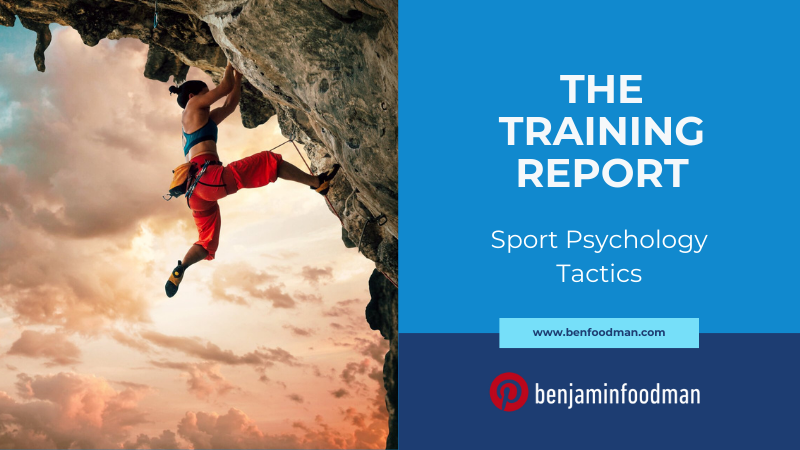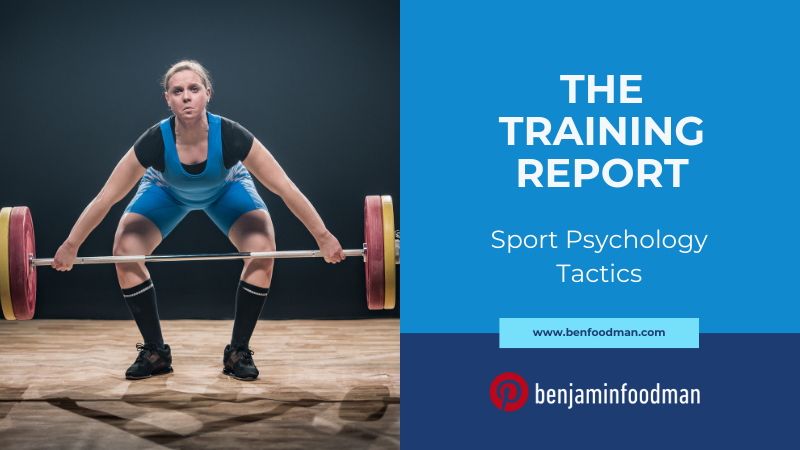Can Brainspotting Help Athletes Improve Their Performance?
Regardless of the type of sport an athlete competes in, all sports induce significant amounts of stress on athletes, which oftentimes can be traumatic. Because Brainspotting can be considered a trauma-informed intervention, this makes the technique a perfect match to help athletes remove trauma-induced mental blocks so that athletes can achieve peak mental performance.
Last updated 10/18/25, written by Benjamin Foodman, CMPC, LCSW, CSCS
About The Author
Ben Foodman is a licensed psychotherapist & Certified Mental Performance Consultant (CMPC) through the Association for Applied Sport Psychology (AASP). He owns his private practice located in Charlotte North Carolina where he specializes in working with athletes to help them overcome mental blocks (the yips), increase mental toughness and improve focus using techniques such as Brainspotting, biofeedback, exercise science and sport psychology. If you are interested in services, use the link here! Enjoy the article below!
Introduction: Brainspotting Should Be Used For Sports Performance
When athletes go to work with traditional sport psychologists, they will typically utilize predictable tools such as cognitive behavioral therapy (CBT), motivational interviewing (MI) and rational emotive behavioral therapy (REBT). While these approaches can be helpful for some athletes, most of the time these tools will be ineffective. Fortunately, the field of sport psychology has developed many new, cutting-edge techniques that have been used to help athletes overcome psychological issues during sport performance. Biofeedback, Neurofeedback, and recovery monitoring devices such as WHOOP have all played a significant role in enhancing mental performance during sport competition.
But in my professional opinion, Brainspotting is the new intervention that is getting ready to take the sport psychology field by storm. For this issue of the Training Report there are 3 key points I want to cover. In part I. I will review what Brainspotting is and how sport psychologists use it with athletes. In part II. I will review the neuroscience behind Brainspotting, and in Part III. I will review how Brainspotting work translates to helping athletes deal with the Yips/Twisties, and in turn improve performance. Let’s first get into what Brainspotting is.
Part I. How Do Sport Psychologists Use Brainspotting to Help Athletes?
In the early 2000s, Dr. David Grand was working with one of his clients who was an athlete. This particular individual was dealing with a mental block that was preventing her from performing a simple movement in her sport. This mental block was similar to the Yips or Twisties. During this time in his career, he was utilizing a popular technique called Eye Movement Desensitization and Reprocessing (EMDR). EMDR has clients move their eyes in certain patterns repeatedly as they process mental blocks or disturbing memories. This process has been shown to be quite effective at reducing the symptoms of PTSD or the previously mentioned psychological issues. During an EMDR session with this athlete, he noticed that her eyes wobbled and froze during a certain point in her visual field as Dr. Grand was having her move her eyes. What he found was that when he had her maintain her gaze in the specific eye reflex position that occurred during an EMDR session, she reported that their processing was deeper and more impactful.
He would later refer to these eye reflexes as ‘brainspots’ and explain that when activated, the deep brain appears to reflexively signal the therapist, beyond the awareness of the client’s neocortex, that an area of relevance had been located. Furthermore, the subcortical brain appears to feel a sense of connection and attunement the neocortical brain doesn’t understand.
Ultimately, what he found in his initial session with this athlete is that this process would both enhances the quality of treatment and potentially speed up the time it would normally take to work through the psychological issue.
At the end of his work with the athlete, she reported that not only had the symptoms subsided but that she was able to land the sport movement that had once been impossible to execute while she was dealing with the Yips/Twisties.
Dr. Grand would go on to use this intervention with many clients finding great success with this approach. When athletes and sport psychologists first learn about this intervention, one of the first things that they want to know is how Brainspotting works. Let’s dive deeper into the science of this approach.
Part II. What Is The Neuroscience That Supports the Use Of Brainspotting For The Yips?
So why would Brainspotting be such a great fit for athletes as opposed to other mental performance interventions? When athletes are experiencing psychological issues during competition, they are usually unable to physically perform at the level they want despite no presence of physical limitations. This is due to what sport psychologists commonly refer to as the Yips. Sport psychologists and athletes commonly understand the Yips to be the ‘core issue’, but the Yips is actually a collection of dysregulation symptoms that are a representation of unprocessed trauma, and this unprocessed trauma in many cases is the result of boundary violations. We see the result of boundary testing clearly when we review the book The Body Keeps The Score, by Dr. Bessel Van Der Kolk. The author gives us a glimpse into the psychological process that happens during boundary testing:
The emotional brain has first dibs on interpreting incoming information. Sensory information about the environment and body state received by the eyes, ears, touch, kinesthetic sense, etc. converges on the thalamus where it is processed and then passed on to the amygdala to interpret its emotional significance.
This occurs with lightning speed. If a threat is detected, the amygdala sends messages to the hypothalamus to secrete stress hormones to defend against that threat. The neuroscientist Joseph LeDoux calls this the low road.
The second neural pathway, the high road, runs from the thalamus via the hippocampus and anterior cingulate, to the prefrontal cortex, the rational brain, for a conscious and much more refined interpretation. This takes several microseconds longer.
If the interpretation of threat by the amygdala is too intense, and/or the filtering system from the higher areas of the brain are too weak, as often happens in PTSD, people lose control over automatic emergency response, like prolonged startle or aggressive outbursts.
Dr. David Grand’s book This Is Your Brain On Sports also explains the neuroscience behind the Yips and boundary violations in the following excerpt:
‘In parallel fashion, the brain attempts to always move toward a state of psychological equilibrium. Over the course of our lives, we are exposed to a variety of life experiences, some positive, some neutral, and some negative.
Through a natural assimilation process, the brain adaptively processes these experiences so they are constructively integrated. What is useful from the experience is learned and stored in the brain with the appropriate emotion and is available for future use.
When an experience is successfully assimilated or digested it is stored in the brain with little attached intense emotion or physical sensation. When we recall such an incident, we don’t reexperience the old emotion or sensation with it.
In this way we are informed by our past experiences and memories but not controlled by them and with sports our present athletic performances are not burdened by emotional or physical baggage from the past, only learned experience.
By contrast, trauma or any strongly negatively charged experience isn’t adequately assimilated or processed. Instead, the upsetting incident remains stuck in the system in broken pieces’.
The author continues, ‘ The body instantly memorizes the physical experience of the trauma in exquisite detail, including the body sensations of the impact and pain, along with the associated sights, sounds, smells and tastes. The attached emotions and where they are felt in the body are frozen as well. The brain is overwhelmed and instead of getting digested, all of the information attached to the injury, including the negative thoughts is stored in the brain in exactly the same form it was initially experienced. Days, week, months or even years later when the athlete is in a situation reminiscent of the original trauma or experiences prolonged stress, the upsetting experience may be unconsciously activated, thus interfering with the performance of the moment. These components represent all of the sensory details from the earlier event that were frozen in the brain and body in their original disturbing state: the images, lighting, emotions, physical movements, sounds, or smells. The unique sensory details later returning to consciousness cause the performance disrupting symptoms so common in mental blocks.’ These excerpts highlight how Brainspotting can be an effective intervention because this model helps athletes access the areas of the brain that are directly causing these dysregulating behaviors, whereas traditional sport psychology interventions such as Cognitive Behavioral Therapy (CBT) do not access these regions of the brain. We know this is the case because most neuroscience research shows us that the vast majority of psychological issues are not due to lack of understanding or missing insight but rather from pressure within deeper parts of the brain.
FAQ
-
Brainspotting can help all athletes across all athlete populations. Ultimately, how effective the intervention will be depends on many factors such as the athlete’s goals, motivation, and how competent the CMPC or sport psychologist is at using the intervention.
-
Brainspotting is still a fairly new intervention and is not considered an evidence-informed practice. That being said, David Grand, the founder of Brainspotting, was formerly an EMDR trainer. Using many of the core scientific principles that make EMDR effective, Dr. Grand developed Brainspotting which many experts argue is a sharper more refined version of EMDR. Additionally, EMDR has high quality research that support the intervention’s scientific claims, many of which overlap with Brainspotting.
-
Simple…if Brainspotting is the correct match for the athlete’s goals then in theory Brainspotting should help them achieve those desired outcomes! Examples of issues where Brainspotting can significantly help athletes is overcoming mental blocks such as the Yips/Twisties, reduce or eliminate performance anxiety, overcome symptoms of PTSD/trauma, and improve focus and concentration.
Part III. Why Do Sport Psychologists Believe Positive Athlete Mental Health Translates To Peak Mental Performance?
I’ve been fortunate to be able to work with high level athletes who have trusted me to help them achieve the psychological performance they desire. However, there is no doubt that it took a tremendous amount of courage on their part to come see me because of the stigma associated with seeing a mental health counselor. This process has become even more difficult for athletes due to how a significant portion of the sport psychology industry claims that mental performance is different than mental health. I contend that mental health and mental performance are one in the same. We need to move away from the notion that athletes are weak if they consider seeking this type of assistance or that these are separate issues. If an athlete has a physical injury, this prevents them from being able to be the best version of themselves during competition. Why would we view the mind any differently?
This is another reason why Brainspotting is such a fantastic application for athletes. The toll that sports take on an athlete’s mind and body will inevitably force athletes to find alternative methods of recovery. For instance, at the end of every sports season the vast majority of sports professionals recognize that athletes need either an offseason or time off to let their bodies recover. Again, this is because we know that there is an inevitable toll that sports take on the body. The same goes for the mind. However, just taking time off is not sufficient. In the same way athletes need to foam roll, stretch, and utilize good nutrition, athletes need to use actual interventions to help heal their mind. Brainspotting is an approach that leverages the brain’s self-healing systems in order to bring the individual back to a baseline homeostasis. If you are interested in learning more, use the link here to learn more!
Note To Reader:
If you are an athlete reading this segment of the TRAINING REPORT, hopefully this content was helpful! I put the Training Report together because I felt like many of the discussions on issues such as the Yips/mental blocks, strength training & other subject matter on athlete performance concepts were really missing the mark on these ideas (e.g. how trauma is the direct cause of the Yips). If you are interested in learning more, make sure to subscribe below for when I put out new content on issues related to sport psychology & athlete performance! Also, if you are looking to work with a mental performance specialist, you are in the right place! USE THIS LINK to reach out to me to see if my services are the right fit for your goals!
ARE YOU ON THE LIST?
Make sure you’re signed up to Ben’s mailing list to receive news & updates on new strategies in sport psychology, upcoming workshops & products. Don’t wait, sign up now!




















































































